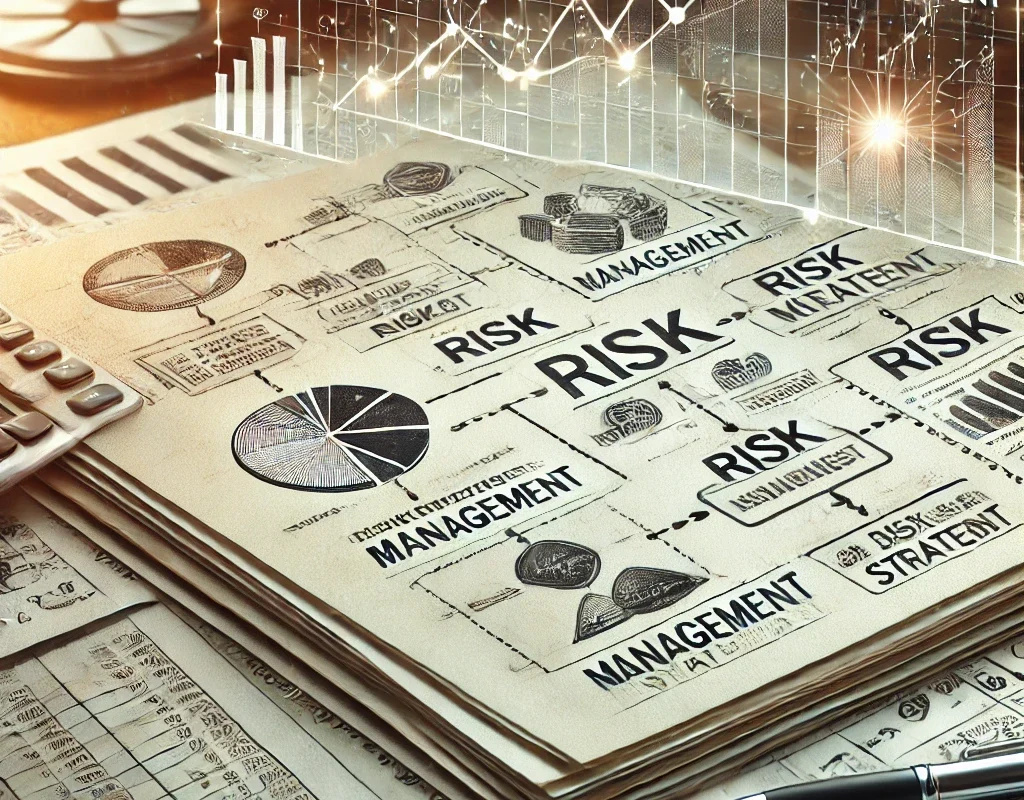In today’s fast-paced business environment, risk management is no longer just an option; it’s a necessity. Whether you are a small startup or a multinational corporation, navigating uncertainty while safeguarding your business goals is key to long-term success. Implementing an effective risk management strategy within your business plan not only helps identify potential threats but also enables you to minimize their impact and capitalize on emerging opportunities. Let’s explore how to build and integrate a comprehensive risk management approach into your business strategy.
What Is Risk Management and Why Is It Critical?
Risk management refers to the process of identifying, assessing, and mitigating potential risks that could negatively affect a company’s operations or objectives. This process is integral to business strategy because it helps companies anticipate challenges and create plans to address them proactively, rather than reactively. In a landscape where market conditions change rapidly, companies that can adapt and manage risks effectively are more likely to succeed and maintain a competitive edge.
Without an effective risk management process, businesses expose themselves to unforeseen events, whether they stem from financial crises, regulatory changes, operational inefficiencies, or external threats like cyberattacks. The significance of implementing a risk management system can’t be overstated—an efficient framework ensures organizational resilience, minimizes financial losses, and boosts stakeholder confidence.
Understanding Different Types of Business Risks
Every business faces a unique set of risks, and these can be broadly categorized into several areas. Having a firm grasp of the types of risks allows businesses to better understand which areas need attention in their strategy. The main types of risks businesses commonly encounter include:
- Strategic Risks: These arise from changes in the business environment, such as competition, market trends, or innovation.
- Operational Risks: Involve internal processes, including production delays, supply chain failures, or equipment breakdowns.
- Financial Risks: Cover anything from fluctuations in exchange rates to credit risks and liquidity issues.
- Compliance Risks: Linked to legal obligations and regulations, these risks could result from non-compliance with local laws or international standards.
- Reputational Risks: Damage to a company’s image can affect customer trust, employee morale, and overall market value.
To effectively manage these risks, businesses must develop tailored strategies that align with their overall goals and risk tolerance.
Integrating Risk Management Into Business Strategy
To implement effective risk management, businesses must move beyond treating risk as a separate entity. Instead, risk management should be deeply integrated into the core of the business strategy. Here’s a step-by-step guide on how to make that integration seamless and impactful:
1. Align Risk Management with Business Objectives
The first step is ensuring that your risk management approach aligns with your business objectives. Every company has unique goals, and the risks you prioritize should reflect the areas of your business that are most critical. Risk management can no longer be a siloed function relegated to compliance teams. By embedding risk into strategic decision-making, companies can ensure that their growth initiatives remain resilient and adaptable to challenges.
For example, if your company is expanding into new markets, risks such as regulatory compliance or geopolitical instability need to be included in your strategy. Conversely, if you’re launching a new product, managing risks related to market demand and production costs will be more relevant.
2. Conduct Comprehensive Risk Assessments
Identifying risks is a critical component of risk management. However, this isn’t just a one-time task—it’s an ongoing process that requires regular updates. Risk assessments help businesses pinpoint potential vulnerabilities and evaluate their possible impact on operations, revenue, and reputation.
To conduct a comprehensive risk assessment:
- Identify all possible risks, both internal and external.
- Classify risks based on their likelihood of occurring and their potential impact.
- Prioritize risks that could significantly disrupt business activities.
Utilizing risk assessment tools and frameworks such as SWOT analysis (Strengths, Weaknesses, Opportunities, Threats) can help structure your risk analysis and ensure that all areas are covered. Risk assessments also form the foundation for building an effective risk mitigation plan.
3. Develop a Risk Mitigation Plan
Once you’ve identified and prioritized risks, it’s time to develop a plan to mitigate them. This step involves designing strategies to either reduce the probability of risks occurring or minimize their impact should they occur.
Common risk mitigation strategies include:
- Risk Avoidance: Opting not to engage in activities that introduce excessive risk.
- Risk Reduction: Implementing measures to reduce the likelihood or impact of the risk.
- Risk Sharing: Transferring the risk to another party, such as through insurance or outsourcing.
- Risk Acceptance: Acknowledging the risk and choosing to move forward with mitigation measures in place.
For each risk, it’s important to assign responsibility to a team or individual within the organization. This helps ensure that risks are monitored and managed consistently.
4. Foster a Risk-Aware Culture
A company culture that understands and respects risk is crucial to successful risk management. Leadership must promote open communication about risks across all departments. This involves training employees to recognize risks in their respective functions and encouraging them to report issues proactively.
Embedding a risk-aware culture requires:
- Top-Down Leadership: Leaders should actively engage in risk management discussions, setting the tone for the entire organization.
- Employee Training: Regular risk management workshops and training sessions help employees stay aware of risks and understand their roles in managing them.
- Transparent Communication: Employees should feel comfortable raising concerns about potential risks without fear of reprisal.
5. Monitor and Review the Risk Management Process
Risk management is not a “set it and forget it” exercise. It requires ongoing monitoring and adjustment. Business environments evolve, and so do the risks. By regularly reviewing and updating the risk management process, businesses can ensure their strategy remains relevant and effective.
Key steps in monitoring and reviewing include:
- Key Performance Indicators (KPIs): Establish metrics that measure the effectiveness of risk management efforts.
- Internal Audits: Conduct periodic audits to evaluate the success of your risk management initiatives.
- Risk Reporting: Create reports that summarize risk status and mitigation efforts for stakeholders.
These reviews will help you identify new risks as they arise and allow you to make necessary adjustments in real time.
Using Technology to Enhance Risk Management
Advancements in technology have introduced tools and platforms that make risk management easier and more effective. Businesses can leverage various software solutions to automate risk assessments, monitor risk indicators, and facilitate real-time reporting. These technologies enhance transparency and provide leaders with the data needed to make informed decisions.
Popular risk management tools include:
- Enterprise Risk Management (ERM) Software: ERM systems help businesses organize, track, and address risks in a holistic manner.
- Data Analytics: By using data analytics, businesses can predict risks based on historical data and patterns.
- Automated Reporting Tools: Automated tools provide continuous risk reports, giving businesses real-time insights into emerging threats and potential vulnerabilities.
You can also read; How to Develop a Digital Transformation Strategy for Your Business
Incorporating Risk Management in Decision-Making
Risk management is most effective when it informs decision-making across the organization. When evaluating new projects, investments, or strategic initiatives, the risk factor should be a core consideration. This involves including risk assessments in business proposals and requiring risk mitigation strategies as part of project plans.
When risk is considered alongside profitability and other key metrics, businesses can make balanced decisions that prioritize long-term sustainability over short-term gains. Moreover, integrating risk into decision-making can provide a competitive advantage by making the organization more agile and resilient in an unpredictable market.



